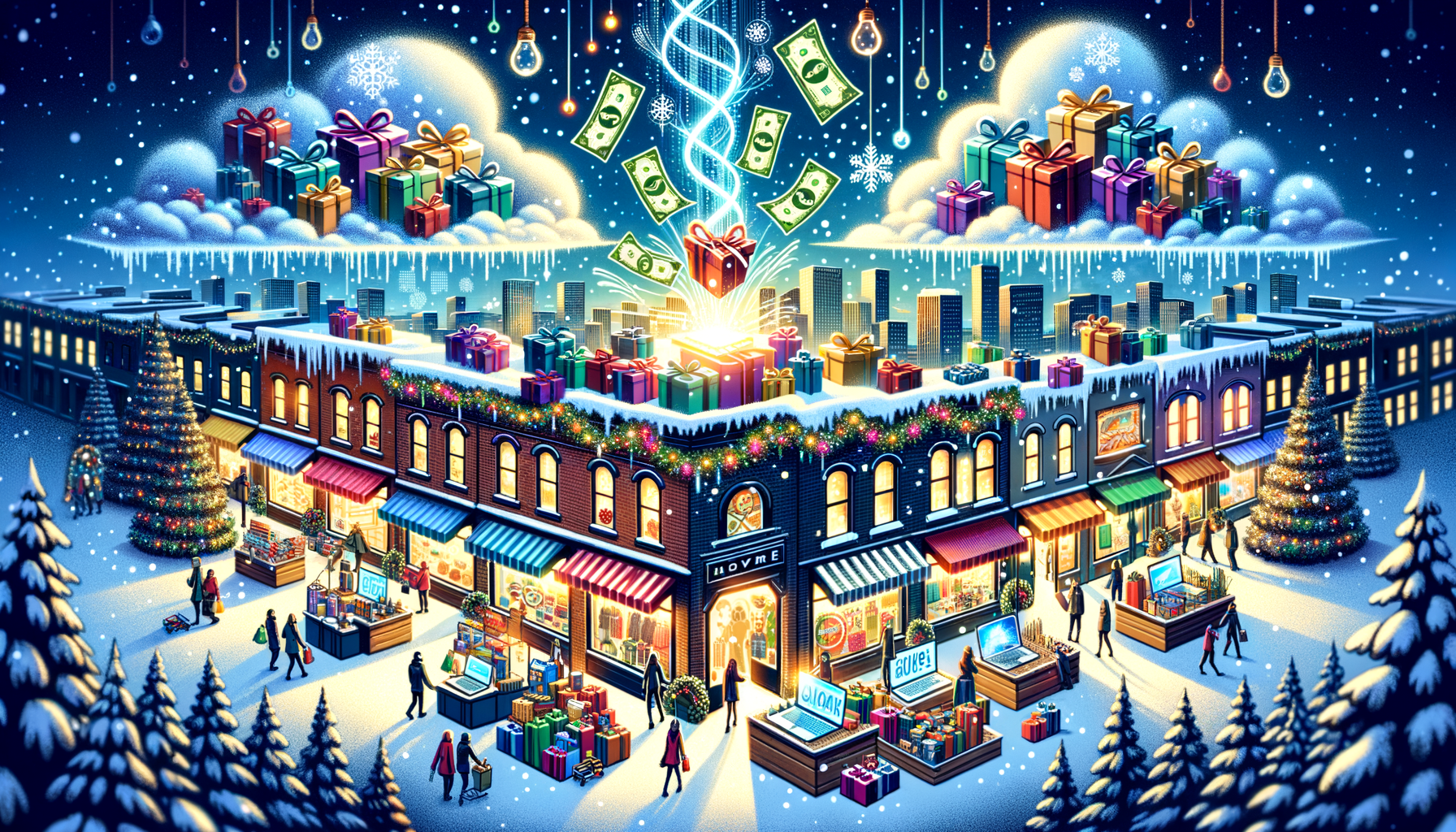“Wrapping Up a Stellar Holiday Season: A Closer Look at December’s Consumer Spending Rise”
In the final month of 2024, American consumers markedly increased their spending, wrapping up a holiday season that was surprisingly solid amidst ongoing economic challenges. A testament to consumer resilience and adaptability, the surge in spending acted as a catalyst for boosting the retail sector and the overall US economy.
As holiday cheer spread nationwide, consumers took to exploring a universe of shopping possibilities, contributing extraordinarily to retail sales. This festive high comes on the heels of a challenging economic landscape, marked by supply chain disruptions, inflationary pressures, and a still recovering labor market. Despite these hindrances, the uptrend in spending has provided a necessary shot in the arm for retailers and other businesses.
A principal factor driving this reinvigoration is the accelerated shift towards digital commerce. Traditional brick-and-mortar stores have made a steadfast turn towards online platforms, an adaptability resonated by consumers. With the convenience and safety that online shopping offers, consumers are increasingly turning to digital avenues to meet their shopping needs. This online shopping spree is indicative of a profound shift in consumer behavior, one that is likely to shape the future of retail.
Moreover, the application of new technologies and innovative strategies has contributed to shaping a multi-dimensional retail scenario. Self-checkouts, contactless payments, the proliferation of e-commerce, and same-day delivery are becoming increasingly mainstream. These developments, coupled with tech-savvy consumers, have refined shopping experiences and preferences, thereby enticing consumers to spend in the retail sector.
Despite the digital transition, in-person shopping is far from extinct. Many consumers are again turning to physical stores, seeking the tangibility and personal touch that virtual shopping can’t provide. For many, the joy of leisurely walking through bright aisles, feeling the texture of products, or trying on clothing is an integral part of the shopping experience that online platforms can’t replicate. Desiring a reconnection with this authentic shopping ambiance, numerous consumers flocked to brick-and-mortar stores this holiday season, bolstering overall spending.
In terms of what consumers are buying, there’s observable dynamism as preferences, and needs continue to evolve. While sectors like electronics, fashion, accessories, and home decor saw surging demand, the foundation of grocery spending remained as sturdy as ever. More and more consumers are also prioritizing experiences over material goods, prompting increased spending on dining, recreational activities, and travel.
A detailed analysis of December’s spending patterns reveals an array of factors that influenced consumer behavior. The promise of significant deals and discounts often influences consumer behavior during festive times, and December was no exception. Beyond that, the desire to spread love and joy in an otherwise challenging year has likely added an emotional aspect to spending. More materially, recent improvements in the employment sector and substantial savings accumulated during lockdowns may have facilitated the uptick in consumer spending.
The implications of this spending boom extend far beyond the retail sector – they reverberate throughout the entire economy. Consumer spending, comprising a substantial chunk of US GDP, has the potential to strengthen the economy and stimulate growth. As spending increases, companies witness enhanced sales, which leads to amplified production, prompting the need for more labor. Correspondingly, unemployment rates may decrease and wages potentially rise, further fueling consumer spending. Thus, an uptrend in spending can potentially create a virtuous cycle contributing to robust economic growth.
However, the continuous splurge in consumer spending has a shadow side. It tends to fuel inflation, a concern that persists in the backdrop of the current economic scenario in the US. While a certain level of inflation can reflect a healthy economy, inflation rates have been hovering near record levels recently, leaving policymakers and consumers alike wary of its potential impacts.
Another lurking concern is the sustainability of this spending high. With supply chain issues unresolved and inflation continuously breathing down the economy’s neck, it remains to be seen if consumers will sustain their levels of spending moving forward. Given the uncertainty that lies ahead, it would be imprudent to form conclusions prematurely.
In conclusion, the December retail sector boom is a testament to an adaptable and resilient consumer base, facilitated by a robust transition to digital platforms and a renewed interest in in-person shopping. Despite persistent economic challenges, the surge in consumer spending heralds an optimistic note for the retail industry and the broader economy. It is a display of the resilience of people, the journey towards a normalizing economy, and the blend of traditional and digital retail experiences in a pandemic-disrupted era. However, concerns over inflation and sustainability require ongoing vigilance, reminding us all that it’s a journey with many miles still to traverse.

